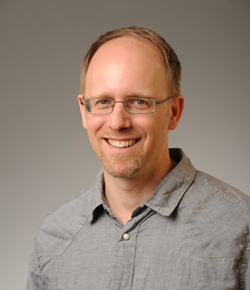BA, Brandeis University. MA, McGill University. PhD, Brandeis University. Scholar of East European Jewry, with a focus on the social history of Hasidism and the Haskalah (Jewish Enlightenment). Author of Men of Silk: The Hasidic Conquest of Polish Jewish Society, which received a Koret Publication Award and was a National Jewish Book Awards finalist. Received textual training in several Israeli yeshivas and the Hebrew University of Jerusalem. Additional interests include Polish-Jewish relations, Jewish economic history, and popular religion. Recipient of the Fulbright Award. Member (2010-11), Institute for Advanced Study, Princeton University. SLC, 2004–
Previous Courses
Religion
Jewish Life in Eastern Europe: A Diaspora Case Study
Open, Seminar—Fall
Nearly three-fourths of the world’s Jewish population once resided in Poland and Russia, producing a vibrant culture that has been celebrated in the paintings of Marc Chagall and plays like Fiddler on the Roof. Thanks to extensive self-government, economic niches like tavern-keeping, educational institutions like yeshivas, and spiritual subcultures like Hasidism, many Eastern European Jewish men and women enjoyed a stable, prosperous, and confident existence. The 19th and 20th centuries, however, witnessed a steady breakdown, manifested in interethnic tensions, violent pogroms, expulsions, and genocide. This course explores the ways in which East European Jews promoted their own self-empowering discourses about gender, law, spirituality, magic, the arts, and politics (e.g., radicalism, nationalism, orthodoxy), often in the face of cultural coercion, exclusion, or violence. At the end of the course, we follow the mass migration to America and then return to confront The Holocaust from the perspective of its four million Eastern European Jewish victims. Throughout, the sources of Eastern European Jewish history will be examined in light of foundational readings in postcolonial and diaspora theory.
Faculty
Modern Jewish Literature
Open, Seminar—Fall
As Jews were emancipated in Europe and freed from the “ghetto,” many began to grapple with modernity through literary genres. Writers like Franz Kafka, Isaac Babel, Primo Levi, S. Y. Agnon, and Sholem Aleichem (whose short stories formed the basis of the play, Fiddler on the Roof) achieved universal acclaim. But the path of the modern Jewish writer was rarely smooth. It usually entailed alienation, rebellion against tradition, bouts of nostalgia, longing, regret, and confrontations with increasingly virulent forms of anti-Semitism, culminating in the Holocaust. In new centers in America and Israel, the Jews’ improved and inverted power status yielded a different, but no less acute, sense of ambivalence, as witnessed in works by authors such as Philip Roth, Cynthia Ozick, Grace Paley, Amos Oz, and David Grossman. Despite the tension and anguish that runs through modern Jewish literature, we will discover works of beauty and poignancy by men and women whose outsider, “pariah” status gave them a unique perspective on the world.
Faculty
Saints, Sinners, and Scoundrels: Jewish Autobiography
Open, Seminar—Spring
Autobiography is among the most contentious literary/historical genres, compromised by the fallibility of memory and the human tendency toward self-fashioning yet unique in the insights it affords into the lived experience of history. This course employs personal narratives as windows onto the Jewish transition to modernity. We begin with narratives by “traditional” Jewish men and women. We then proceed to the wrenching accounts of early detractors from tradition and then to writings by Jewish leaders of modern political movements like Zionism, Jewish Socialism, Communism, Orthodoxy, and Ultra-Orthodoxy. We conclude with individual perspectives on The Holocaust, the Israeli-Palestinian conflict, and American Jewish feminist, queer, and transgender self-narratives.
Faculty
The Holocaust
Open, Small Lecture—Spring
The Holocaust raises fundamental questions about the nature of our civilization. How was it that a policy of genocide could be initiated and carried out in one of the most advanced and sophisticated countries of Europe, a country that produced many of the greatest thinkers and artists the world has seen? In this course, we will attempt to explain how those events took place, beginning with the evolution of anti-Semitic ideology and violence. At the same time, we will look at how victims chose to live out their last years and respond to the impending catastrophe through art, diary writing, mysticism, physical resistance, hiding, and so on. Finally, we will attempt to come to grips with the crucial, but neglected, phenomenon of bystanders—those who stood by while their neighbors were methodically annihilated. We shall inevitably be compelled to make moral judgments; but those will be of value only if they are informed and based on a fuller understanding of people and perspectives in this dark chapter of European history. This course will be run as a lecture/seminar hybrid.
